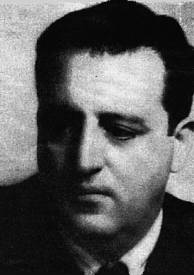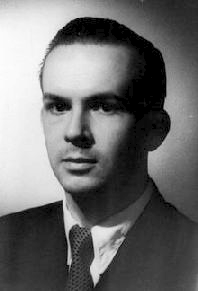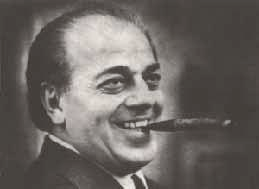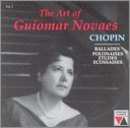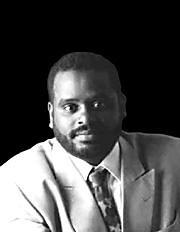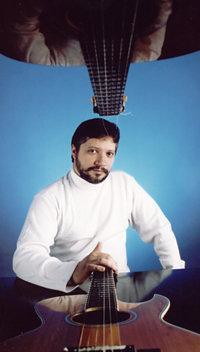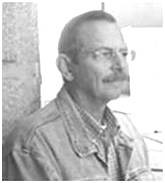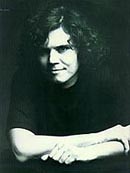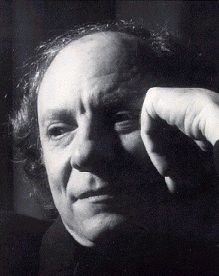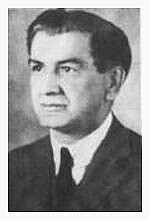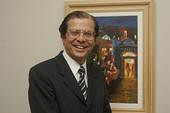
Paulo Costa Lima was born in 1954 in Brazil. He is a Brazilian composer, teacher and writer. He did his undergraduate studies in composition, theory and analysis, and cello. He studied composition at the University of Illinois and received his MS in music education. Since 1979 he has been a professor of theory and composition at the School of Music of the Federal University of Bahia.
Lima is considered one of the most talented composers of his generation. He has produced 53 compositions, mostly for solo instruments and various chamber combinations, and also a few choral and orchestral works, and two electronic pieces, all in eclectic styles in which local folk and popular inspiration are combined with modern, experimental techniques.
Lima’s music has been widely performed in Brazil, Argentina, Venezuela, Europe and the USA. He has received numerous commissions and fellowships, and won various composition prizes. He has published several articles and two books on the topics of theory of rhythm, music and psychoanalysis, and the teaching of composition.
Reference
Classical Composers Database (2009). Brazilian composers. Eduardo Camenietzki. Retrieved
October 16, 2009 from http://www.classical- composers.org/comp/camenietzki
Oxford Music Online (2009). Costa Lima, Paulo. Grove Music Online. Retrieved
October 16, 2009 from http://www.oxfordmusiconline.com.ezproxy.lib.umb.edu/
subscriber/article/grove/music
DiscographyI. Compositions 01. Prodeo, para fl, cl, cordas. [1976]
02. Isn't it necessary ? para soprano e Conjunto de Cordas, [1976].
03. Two seconds of a dead hope, para tenor, vn, cello [1976]
04. Two Premises (Oscila), para piano solo. [1977]
05. Bundle (Tece), para flauta solo [1977].
06. String Quartet # 1 [1977].
07. Two electronic pieces [1977].
08. Trio, para vn, vla, cello [1978]
09. A Barca, para grupo de faladores [1980]
10. O povo e seus asseclas, para narrador, grupo de faladores e cordas
[1981]
11. Deslizes, para Conjunto Misto, 1981.
12. Iô-Iá, para grupo de faladores [1981].
13. Suite Falada [1981].
14. Rota e Desvio, para Conjunto Misto, 1982.
15. Ubabá, o que diria Bach ! para Conjunto Misto. [1983]
16. Quarteto de Cordas # 2, "Brasiléia" [1983].
Recordings 1. Ubabá o que diria Bach ! op.15, para Conjunto misto.
Compositores da Bahia 5, UFBa, 1985. Regente: Ernst Widmer ; Conjunto de
Música-Nova da UFBa.
2. Atôtô Balzare, Si, Si como no ! op. 20, para 5 Pc/Pn.
Compositores da Bahia 7, UFBa, 1987. Regente: John Boudler -
Intérpretes: Grupo de Percussão do PIAP
3. Cuncti-Serenata op. 17, Pn solo . Compositores da Bahia # 7,
UFBa, 1987.Piano: Beatriz Balzi
4. Fantasia op. 23, Pn solo. Compositores da Bahia # 8, UFBa,
1987 Piano: Ryoko Veiga
5. Corrente de Xangô op. 34, Vc solo. CD Impressionen. Kosmos,
Berlin. violoncelo: Matias de Oliveira Pinto, 1997.
6. CD Outros Ritmos (Prêmio Copene de Cultura e Arte-96), abr.
1997. Peças gravadas: Ibeji op.41, Apanhe o Jegue op. 42, Atotô do
L'Homme armé op.39, Pega Essa nêga e chêra op. 28, Imikaiá op.32,
Ponteio op. 35, Saruê de Dois op. 37 para duo de clarinetas.
7. Apanhe o Jegue op. 42 e Lembrando e esquecendo Pixinguinha op.
49. Uma Festa Brasileira: Música para Flauta e Violão, José Ananias
Souza Lopes, flauta e Edelton Gloeden, violão. Paulus 1998.
8. Imikaiá op.32 e Ponteio-Estudo op. 35. In, 60 Anos de José
Eduardo Martins (CD). São Paulo, jan. 1999.

